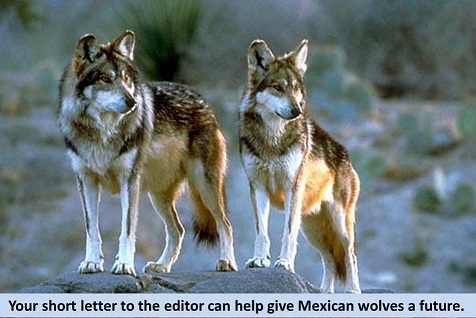Great Letters to the Editor From Lobo Advocates

SHOW THAT YOU STAND WITH WOLVES!
El Defensor Chieftain – July 27, 2017
El Defensor Chieftain – July 27, 2017
Arizona Daily Sun – July 26, 2017
Santa Fe New Mexican – July 22, 2017
Albuquerque Journal – July 22, 2017
The U.S. Fish and Wildlife Service is under a court order to complete the plan for the Mexican gray wolf by the end of November. Despite the recommendations of independent scientists, they developed a draft recovery plan for the Mexican gray wolf that unnaturally limits the population size and range of this subspecies in the Southwest. The plan hands over power to the states who have blocked recovery at every step of the way. These same states will be allowed to determine the timing and location of releases, in effect controlling the program. The plan excludes millions of acres of suitable habitat near the Grand Canyon and in the Southern Rockies in a purely political move. It would impose an arbitrary cap on population size and restrict genetic interchange within the two wild populations, thereby dooming meaningful recovery. The result is a plan that will likely drive the Mexican gray wolf to extinction.




